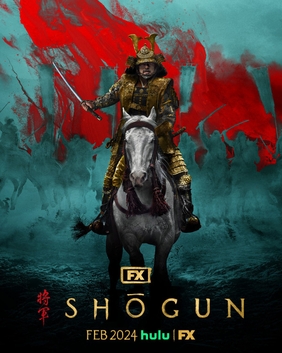For centuries, Japan was under a supreme ruler, the emperor, and a hereditary nobility held power over the people, the imperial court. Over time, wealth and power began shifting and diffusing across the country. Regional wealth had given birth to a burgeoning group of feudal lords.
The country began spiraling into armed conflict, which inevitably gave rise to more military rule, the Samurai. The samurai was a warrior class bound to a code of conduct and were sworn duty to protect their lord’s at all costs.
The unexpected rise of the samurai diminished the emperor’s authority, unleashing a revolt that established a new commanding ruler atop the social structure: the Shōgun.
For a period of time, the Shōgun had appointed a period of peace, but unrest slowly simmered even greater. As nobles had fought in battle to expand their fiefdoms.
New conflict had reignited, as states threatened to drive the country apart, ultimately plunging Japan into hundreds of years of turmoil and civil war.
War was a way of life, and death before dishonor was the essence of what it means to be a samurai. However, true honor can only be obtained through victory in battle. Defeated samurai are bound to the code, and must take their own life through seppuku.
The events above accurately describe the true history of the samurai’s rise to power.
The events created the acclaimed fictional novel by James Clavell, Shōgun.
Japan 1590, chaos has erupted since the fall of the last Shōgun. The country takes up a period of peace under a new ruler, the Taikō. The taikō is a grand chancellor of the emperor.
The moment of unity is short lived when the taikō dies, leaving his seven year old heir not yet of age. The nation’s fate is thrown into peril.
A council of regents gather, one bushō from the five major regions of Japan are in control of territories of strategic importance.
Bushō are great feudal lords who possess vast hereditary land holdings.
Yoshi Toranaga, of Kantō. Sugiyama Josui, from the northern regions of Hokushū. Ohno Harunobu, of Bungo. Kiyama Ukon Sadanaga, of Higo. Ishido Kazunari, of Gōshū.
With the samurai code, the regents bind to duty, even as distrust poisons the council. In the absence of Nakamura, Ishido takes the seat at Osaka Castle, an impenetrable fortress where the highest warrior class emerges. The women in the samurai class are educated, accomplished, trained in the ways of war, and are to help maneuver and influence regions.
The christian fate had begun bleeding into the seas of Japan, as Catholics and Protestants carve up the Western world. Catholics had begun inserting themselves across Japan, attempting to convert the masses. This had begun to further deepen their divides, with each bushō keeping a secret agenda for greater control and power.
The state is on the precipice of war, when John Blackthorne, a privateer from the west, has found itself along the island’s coast. Toranaga appointed Lady Mirako, his trusted advisor, to watch and become Blackthorne’s translator.
The three fates will now be forged to fight for the future of a vast nation as history collides in the dawn of a new era.
World of “Shōgun”
April 12, 2024

“Shogun” explores the dynamic of Japan’s samurai. (Paramount Television)
Donate to The Grizzly Gazette
Your donation will support the student journalists of Los Osos High School. Your contribution will allow us to purchase equipment and cover our annual website hosting costs.
